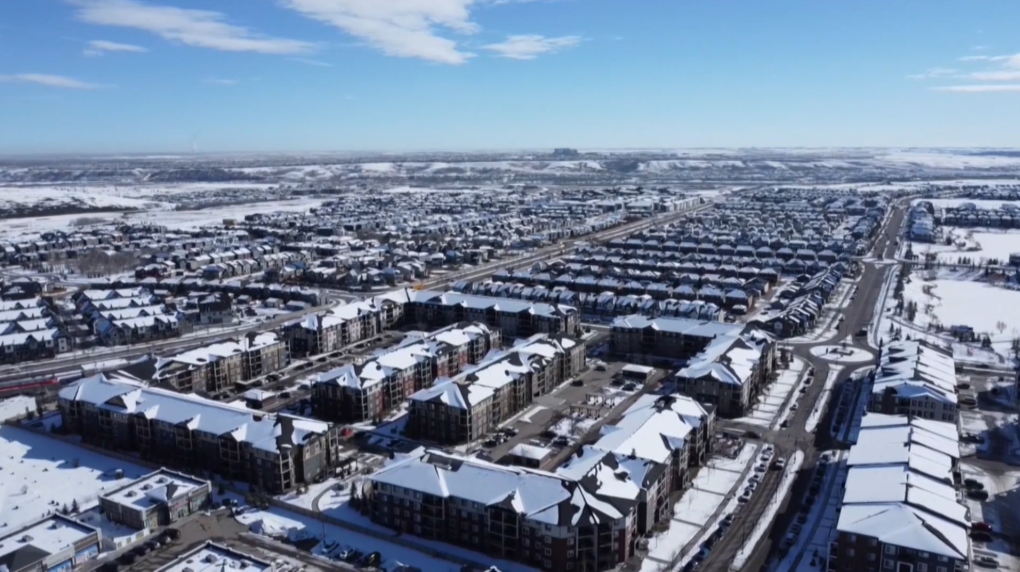More housing needed to keep up with demand in Calgary: CMHC

The Canada Mortgage and Housing Corporation (CMHC) says more housing is needed across the country to keep up with the increasing population, especially in Calgary.
Construction of new homes in Canada’s six largest cities remained stable at near all-time high levels last year, driven by a surge of new apartments – despite demand still outpacing supply for rental housing.
“There’s still room to build more,” said senior analyst Adebola Omosola, with CMHC.
“And the demand is so strong that the supply still isn’t keeping up with the pace of the demand that we’ve seen in Calgary.”
The agency says combined housing starts in the Toronto, Vancouver, Montreal, Calgary, Edmonton and Ottawa regions dipped 0.5 per cent compared with 2022, totalling 137,915 units, as apartment starts grew seven per cent to reach a record 98,774 units.
“Demand for housing has grown significantly,” said Omosola. “And we do believe that developers are responding to that strong demand.”
In 2023, Calgary saw total housing starts increase by 13 per cent, reaching 19,579 units.
It increased for all dwelling types, with row homes at 34 per cent and apartments at 17 per cent growth.
Meanwhile, the number of single-detached homes breaking ground was only slightly higher at two per cent.
“Residential starts are a real barometer of the economy,” said Bill Black, president and CEO of the Calgary Construction Association.
“And then that barometer then signals to construction companies what kind of volumes we can expect.”
Black says opening up the options for tradespeople to find themselves a job, is key to expanding the industry and completing more projects.
“Statistically across Canada, for every home that is built, about $107,000 worth of infrastructure is needed in the form of roads, utilities, sewers, sidewalks, etc.,” he said.
“If I’m bidding on a project today, I may not be there for 12 months. So I have to then predict if I’m going to have the resources and the workers to work in the field, to the scale that the project requires.”
Realtor Brian van Vliet with Redline Real Estate Group, powered by Real Broker, says this is a seller’s market.
“We are in an incredible mayday situation when it comes to inventory,” he said.
He says many clients are moving from Ontario and B.C. looking for rental units, but others in Calgary are looking to downsize, driving the demand for an apartment or condo up.
van Vliet says others are being priced out of bidding wars, frustrating them and turning them to new build developments.
“You go and buy a place, you could be waiting 10 months, 15 months to be able to actually move in,” he said.
“So that takes a very special kind of client that’s willing to wait that period of time.”
The CMHC says rising costs, larger project sizes and labour shortages have led to longer construction timelines, prompting various levels of government in Canada to announce new programs aimed at stimulating new rental housing supply.
ATB Financial also released a report on Alberta’s population boom in 2023.
Alberta added 202,324 residents between January 1, 2023, and January 1, 2024, for a growth rate of 4.4 per cent.
Just under two-thirds of Alberta’s growth since January 2023 came from net international migration.
“Ontario was the main source of interprovincial migrants to Alberta, accounting for 42 per cent of Alberta’s net gain from the rest of the country last year. British Columbia was the second largest source at 28 per cent of the total followed by Saskatchewan at nine per cent,” read the report.
With files from The Canadian Press
View original article here Source









